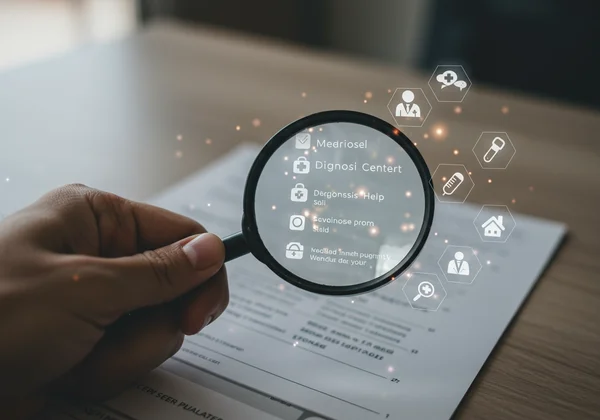Adult Autism Diagnosis: Your Step-by-Step Guide
Have you recently explored your traits with a self-screening tool and found yourself wondering, What comes next? This is a common and important question. For many, taking a preliminary autism screening is the first step on a profound journey of self-discovery, leading to the consideration of a formal adult autism diagnosis. This process can feel overwhelming, but it doesn't have to be. This guide aims to demystify the path forward, offering a clear, empathetic roadmap for adults navigating from self-reflection to a potential clinical assessment. If you're at the beginning of this journey, a great place to start is with a tool for self-exploration, like the RAADSR test online.

Understanding Formal Autism Assessments for Adults
Before diving into the practical steps, it's crucial to understand what a formal assessment entails and why it might be a meaningful step for you. This isn't just about getting a label; it's about gaining a framework for understanding your life's experiences. A formal diagnosis can be a key that unlocks a new level of self-acceptance and provides access to tailored support.
What Defines a Clinical Autism Diagnosis?
A clinical autism diagnosis is a formal evaluation conducted by a qualified healthcare professional. Unlike an online screening, it is a comprehensive process. Clinicians typically use established diagnostic criteria, such as those outlined in the Diagnostic and Statistical Manual of Mental Disorders (DSM-5), to determine if an individual's pattern of traits and challenges aligns with the criteria for Autism Spectrum Disorder (ASD). This involves in-depth interviews, observational sessions, and sometimes standardized questionnaires to build a complete picture of your developmental history and current functioning.

Why Consider a Formal Diagnosis as an Adult?
The reasons for seeking a diagnosis in adulthood are deeply personal and varied. For many, it provides a powerful sense of validation—an explanation for lifelong feelings of being different. This newfound understanding can reframe past struggles, transforming self-criticism into self-compassion. A formal diagnosis can also unlock access to workplace accommodations, therapeutic services, and community support networks designed for autistic individuals. It provides a shared language to communicate your needs to family, friends, and employers, fostering stronger, more authentic relationships.
How to Get Diagnosed with Autism: The Practical Steps
Once you've decided to pursue a formal assessment, the next phase involves navigating the healthcare system. This can be the most challenging part of the autism diagnosis process, but being prepared can make it significantly smoother. Knowing where to look and what to gather is half the battle.
Finding a Qualified Professional for Adult Autism Assessment
The first step is locating a professional who specializes in diagnosing autism in adults. This is critical, as adult presentations can be subtle and are often missed by clinicians inexperienced in this area. Look for professionals such as a psychologist, psychiatrist, or a specialized diagnostic center. You can start by asking your primary care physician for a referral or searching online databases from national autism organizations. When you contact potential providers, be sure to ask about their experience with adult autism, especially concerning how it presents differently across genders and in individuals who have developed "masking" or camouflaging techniques.

Preparing for Your Autism Assessment Appointment
Preparation can empower you to get the most out of your assessment. Clinicians will want to understand your entire life story, so gathering information beforehand is incredibly helpful. Compile your medical history, school reports, and any previous psychological evaluations. It’s also valuable to create a list of your personal observations. What specific traits or challenges made you consider autism? Think about your social interactions, sensory sensitivities, communication style, and intense interests. If possible, collecting childhood records or talking to parents or older relatives about your early development can provide crucial insights for the assessing clinician.
Navigating the Autism Diagnosis Process
The assessment itself can span several appointments. Knowing what to expect can reduce anxiety and help you engage more fully in the process. Remember, this is a collaborative effort between you and the clinician to understand you better. It's a journey toward clarity, not just a test to be passed.
What to Expect During the Evaluation Sessions
Evaluation sessions typically involve a mix of structured interviews, questionnaires, and behavioral observation. The clinician will ask detailed questions about your developmental history, social relationships, communication patterns, and restricted or repetitive behaviors. They may use standardized assessment tools like the ADOS-2 (Autism Diagnostic Observation Schedule, Second Edition). It's important to be as open and honest as possible. This is a safe space to discuss challenges you may have hidden your entire life. Starting with a free autism test can help you organize your thoughts on these topics beforehand.
Understanding the Costs and Insurance Coverage for Diagnosis
The financial aspect is a significant consideration for many. The cost of an adult autism assessment can vary widely depending on your location, the provider, and your insurance plan. Before scheduling, contact your insurance company to understand your coverage. Ask specifically about billing codes for "adult autism evaluation." Some diagnostic centers offer sliding scale fees based on income, so don't hesitate to inquire about payment options to ensure affordability. While it can be an investment, many find the clarity and support it enables to be invaluable.
After the Diagnosis: Embracing Your Neurodivergent Identity
Receiving a diagnosis can bring a whirlwind of emotions—relief, grief, excitement, and validation. It’s the beginning of a new chapter. Post-diagnosis, focus on finding resources and community. Online groups, local meetups, and autistic-led organizations can provide invaluable peer support. This is a time for self-advocacy and learning what accommodations and strategies work best for you. Embracing your neurodivergent identity is a journey of integrating this new understanding into your sense of self and learning to celebrate the unique way your brain works. Exploring autism traits in adults is a continuous process of self-discovery.

Your Next Steps: Embracing the Journey
Taking the step towards a formal adult autism diagnosis is a deeply personal and often transformative journey. While online screening tools like the one available at our RAADSR test platform can offer valuable self-reflection and a crucial starting point, a formal diagnosis provides a deeper clinical understanding and access to tailored support. This journey is about understanding yourself better, finding your community, and embracing your unique path. Remember, whether you pursue a formal diagnosis or not, the insights you gain along the way are valid and empowering.
Frequently Asked Questions About Adult Autism Diagnosis
Is the RAADSR test accurate enough for a formal diagnosis?
No, the RAADSR test and similar online screeners are not diagnostic tools. They are designed for self-reflection and to help identify autistic traits that may warrant further professional evaluation. While they are based on established research, only a qualified clinician can provide a formal autism screening and diagnosis.
What is a high score on the RAADSR test, and what does it indicate about needing a diagnosis?
A high score on the RAADSR test suggests that you endorse many traits commonly associated with autism. It does not automatically mean you are autistic, but it does indicate that pursuing a formal formal autism assessment with a professional could be a logical next step if you are seeking clarity. You can learn more by exploring the RAADSR score meaning on our platform.
Can I self-diagnose autism based solely on online tests?
While self-diagnosis is a valid and important part of the journey for many in the autistic community, it is not the same as a clinical diagnosis. Online tests can be a powerful tool for self-understanding, but they cannot provide access to legal protections or medical support. A clinical diagnosis is necessary for those seeking formal accommodations. If you're curious, you can start your assessment to begin your self-exploration.
What is the main difference between RAADSR screening and a clinical autism assessment?
The primary difference is depth and authority. A RAADSR screening is a self-report questionnaire that provides a snapshot of your traits. A clinical assessment is a comprehensive evaluation conducted by an expert that includes interviews, observation, a review of your developmental history, and standardized testing to arrive at a professional, recognized diagnosis. The RAADSR test for child or adult use is a first step, not the final word.